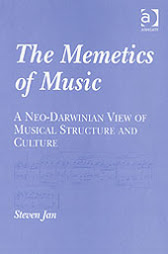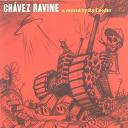Exploring cultural productions, transmissions and socio-identitarian processes through urban arts
by Marco Valesi
1. Introduction:
What is a symbol? What is a complex society? Accepting two essential assumptions, that symbol is a complex structure and that a complex society is a human structure characterized by patterns of relationships between individuals that share a distinctive culture or traditions created by a cultural transmission, I have a theoretical incipit of my approach that will permit me also to take up the idea that symbols embedded within art works are re-presentations of complex cultural ideals which in many cases can be correctly considered as viruses and give ground to my thesis.
Symbols expressed in social discourse provide a means for communication. These symbols exist in many forms, including as measured in patterns of verbal and written expression. In social systems, the individual members of social groups recognize and produce symbols as part of normal discourse, as expressed by the French philosopher Michel Foucault. As pointed out symbols are important instruments for complex social processes but also symbols themselves are interpreted by human awareness. Every artistic endeavor contains numerous symbols expressed at many different levels within art works. Some of these symbols are imbedded into the art with a deliberate and conscious intent while others are the result of subconscious communication. The unintended symbols are the work of the artist's subconscious mind. Recognition of the roots of meanings inherent in artistic endeavors can lead an individual to a source of great understanding and power thus helping to build a social r-evolution.
During my essay I will try to answer other questions: how may arts, interpreted as socio-cultural elements, help to unveil and integrate symbolic realities in order to facilitate shared meanings and understandings between peoples? And thus, how may arts generate the conditions for participatory, creative cultural diversity which may contribute to the construction of a social co-evolution?
Furthermore, through a cultural approach, my study aims at investigating the ways in which the transmission of symbols in arts, especially in murals and urban arts, can create a networked cultural public sphere constituting a society’s drive towards human development.
Answering to those questions I will, frequently, use Richard Dawkins's definition of the meme concept in his 1976 classic The Selfish Gene proposing that human culture is composed of a multitude of particulate units, memes, which are analogous to the genes of biological transmission, arguing that replication also happens in culture, albeit in a different sense. These cultural replicators are transmitted by imitation between members of a community, either vertically or horizontally and are subject to mutational-evolutionary pressures over time.
My thesis, finally, is an attempt to integrate, creating new perspectives and offering different examples, the central ideas of cultural productions, transmissions and evolution into a new symbolic frame. Using this paradigm my research develops a new perspective on the relationship between culture and social identities underlining the links among elements of identity and how all this is related to social-cultural creation and evolution.
1.1Delimiting the field of enquiry, stating the general objective to orient and focus the research
This research is situated at the junction of critical, socio-cultural and educational theories and it uses an interdisciplinary methodology comprising complementary empirical and theoretical approaches so as to investigate the arts as trans-cultural formative experiences. The holistic approach contextualizes social actors assertions in order to identify commonalities which may create and improve social identities. The thesis focus on the question of how symbols construct, mediate and sustain meanings, social learning processes, exchange and integration in society, giving valuable insights into subjective as well as collective processes of identity construction. This essay focuses on exploring the application of memetics—a branch of cultural evolution theory—to mural paintings, graffiti, urban art in general- as a case study. Supporting the idea of memes as units of imitation, representation or information that forms the basis of an inheritance system, we will have to consider the culture of any particular time and place as a changing physical and social environment in which spectatorship, performance practices and representational contents adapt over time. Applying memetics ideas to my research I can take seriously the possibility that cultural traits such as performance traditions and genres evolve according to criteria that only make sense when viewed as if the adaptations benefited the memes and societies own replication, frequency and survival over time. Where evolutionary psychology and other cognitive approaches emphasize the innate cognitive biases of our social minds, memetics would trace the inherited cultural lineage of specific attitudes, beliefs and practices, all of which are realized in the social sphere as information that has been replicated and transmitted. I believe that it’s necessary to apply natural-selection thinking to areas outside biology like social sciences, fields that vitally intersect the interdisciplinary mosaic of cultural studies. The evolutionary approach to cultural history has already made significant contributions in the study of religion and ritual behavior, prehistoric archeology, the history of science and the changing of linguistic forms over time so we can apply it to personal creations embodied into an art work analyzing also the impact of those processes into the identitarian adaptation of reality and society. The entertainment or aesthetic value of art works will engage the attention of the conscious and social mind allowing the thought viruses to penetrate the defenses of the unaware target's complex social structure. Once the thought viruses have penetrated, shared meanings can be disseminated and replication can commence. The symbols contained within art works can assume a variety of different forms depending on the type of art being examined. In this way we assist to the beginning of a social evolution through new mutant archetypes.
The concept of the evolution of culture or ideas as memes has cultural analogies with genes. Memes can be ideas, music, politics, religion, sex, customs, art, fashions, human-made artifacts: every cultural entities. They compete with each other and evolve over time.
The psychologist Mihaly Csikszentmihalyi, elaborating on Dawkins' work, defines cultural evolution as "the differential transmission of information contained in artifacts- in objects, concepts, beliefs, symbols and behavior patterns, that exist only because people took the trouble to make them": so there have been many more memetic generations than genetic ones and as a result an individual trend or tendency became, through symbolic and artistic passages, a new social ideal type.
1.2. The specifics: objectives and study proposals
For centuries, mural paintings have adorned walls as symbolic representations of artistic expression, unconfined by the temporal restraints of the political conversation dictated within the murals themselves. Starting from the Cave paintings we can realize the importance of communicating with others, through a religious or ceremonial purpose or just to shared symbols. Also the symbolic meanings of urban walls, following this historical excursus, provide communities, through an artistic embodiment of the collective consciousness, with social norms, behaviors and cultural expectations. Whether the original intended message of the prehistoric artist was to be conveyed to one or to a larger societal collective is debatable but its placement in a locality that was observable by others presents an argumentative perspective supporting its intended use as a mass communicative tool. When considered as a tool for communication, the materialistic qualities of the scribe's work extend beyond the aesthetic qualities it retains.
Within the last century murals have been used as a cultural unifier. Muralists have established a conscious use of an art form to reach the masses without the support (and or restriction) of upper-class bureaucratic entities that place controls and constraints on the dissemination of mass communication. Another historical form of mural and socio-cultural expression is represented by graffiti. The word graffiti derives from the Latin root of the word “graffiari”, meaning to scratch or scrawl. The negative connotations at the root of this word date back to the opponent of Roman Emperor, Julius Caesar, who expressed their aversion to his dictatorship on the walls of the Roman Forum.
Following the revolution of graffiti that transpired in the early 1970's, when an aesthetic and or stylistic evolution took place throughout the world, graffiti scribes began to place their personal definitions on the elements that simultaneously emerged during the growth of the culture. The fundamental basis behind these designs and the culture that evolved with the speed of graffiti was birthed from the mural wall paintings used as a mass medium to infer a message to, or from, a community that indicated the social perceptions, norms, and expectations found within the community itself. Graffiti and murals hold a strong significance in a culture that is personified by a common heritage. Mural artists use the images to communicate a representative model by which all other members within the newly found culture should be expected to adhere to. The mural is much more than paint conformed to an aesthetically pleasing image. Rather, it has the potential to be a symbolic representation of the cultural imperatives that it embodies. The murals ability to instill pride and to communicate hopes, fears, dreams and expectations, extends the murals purpose, as well as the purpose of the community that embraces it, while validating their simultaneous existence. Actually into the Urban Art movement many of the art works are spray-paint and stencils done but are beginning the transition from underground subculture to mainstream art movement.
Keywords: culture, memetics, transmission, symbols, identity, society, biological and socio-cultural evolution, mutant archetypes, replication, mural paintings, street art.
Subscribe to:
Post Comments (Atom)



















































No comments:
Post a Comment